This week I had some discussion with several CEOs of various microbiome testing companies and the question came up:
Can we take the percentile threshold from the Kaltoft-Møldrup(KM) Range computation and apply it to other tests?
If this is likely true, then we reduce the impact of the Blue “Whale in the Room”

Fortunately, I have the data to reasonably answer that (for the common good) and show charts from some of the 60+ providers that have had samples uploaded. Most people in this area are very siloed into one lab, one way and cannot see the forest, only the leaf that they are on.
Lactobacillus
Biomesight

Ubiome

Ombre

PrecisionBiome
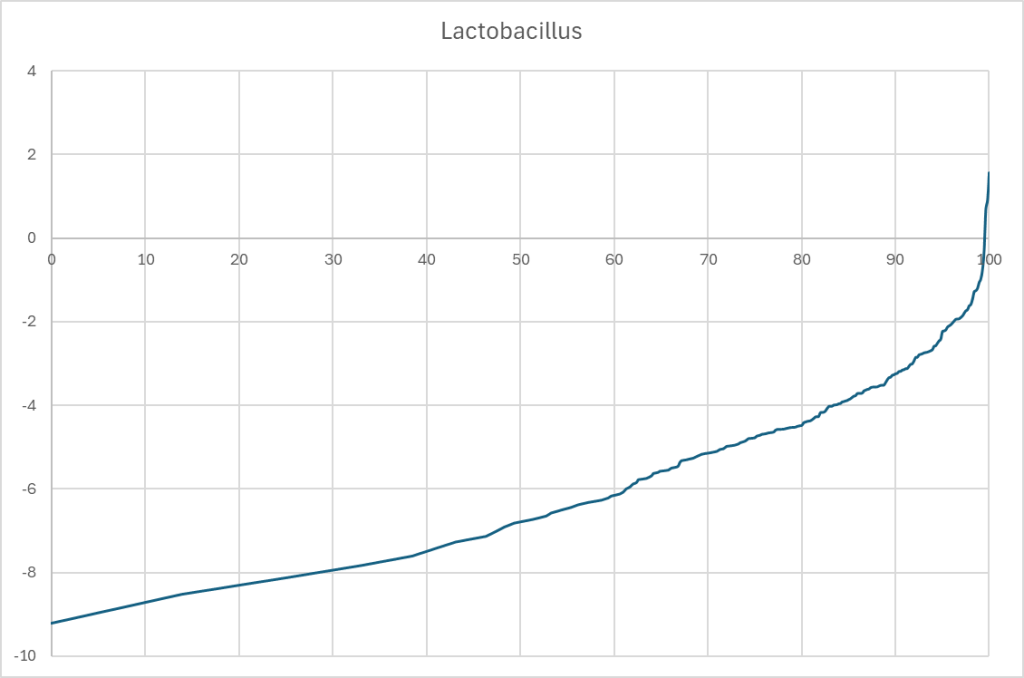
Vitract

Thorne
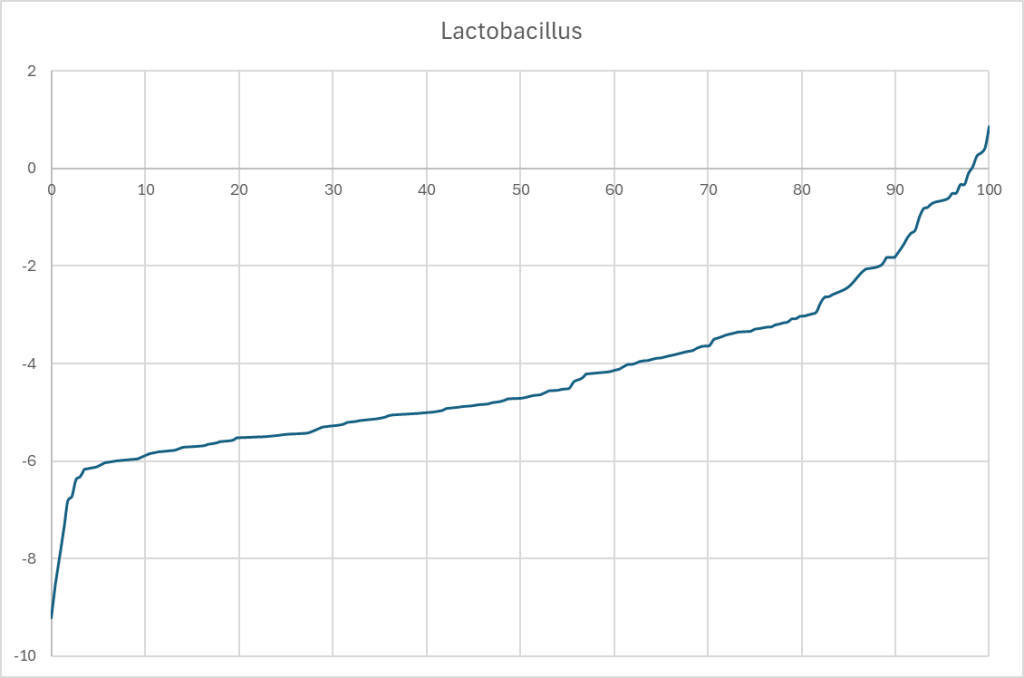
Bifidobacterium Longum
Biomesight
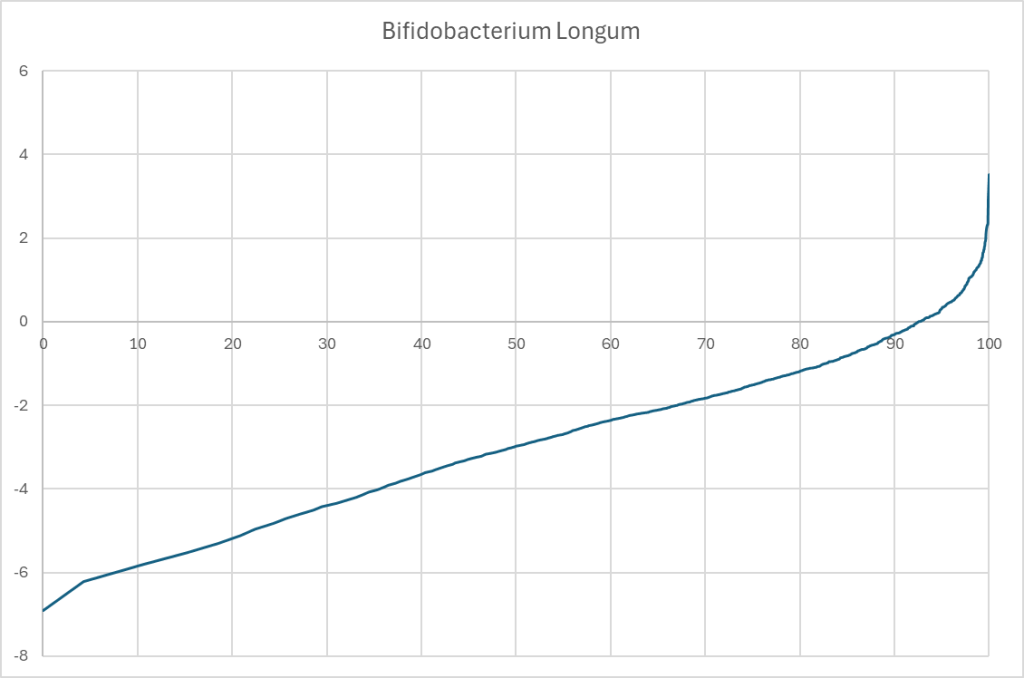
Ubiome
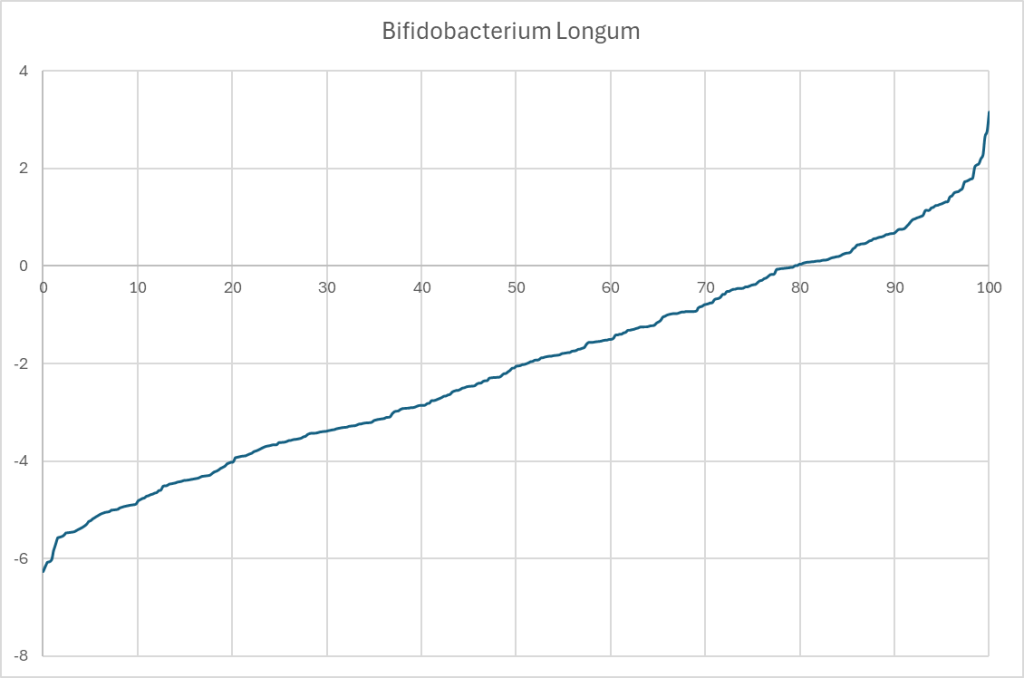
Ombre
Not sufficient data (3 samples had it)
PrecisionBiome
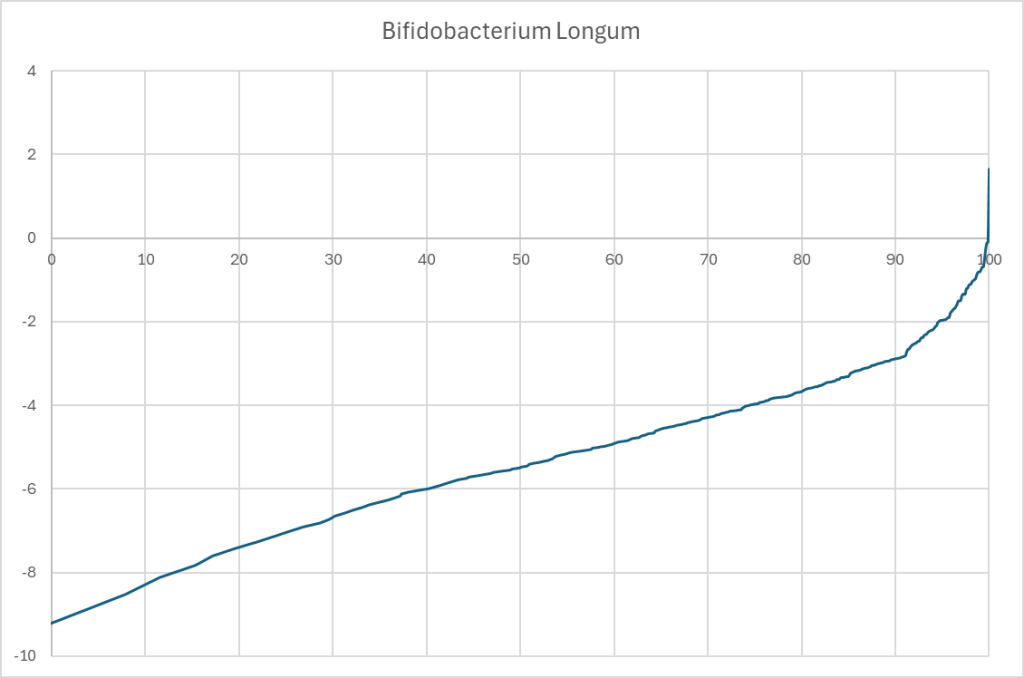
Vitract
Not sufficient data (3 samples had it)
Thorne

Faecalibacterium prausnitzii
Biomesight

Ubiome
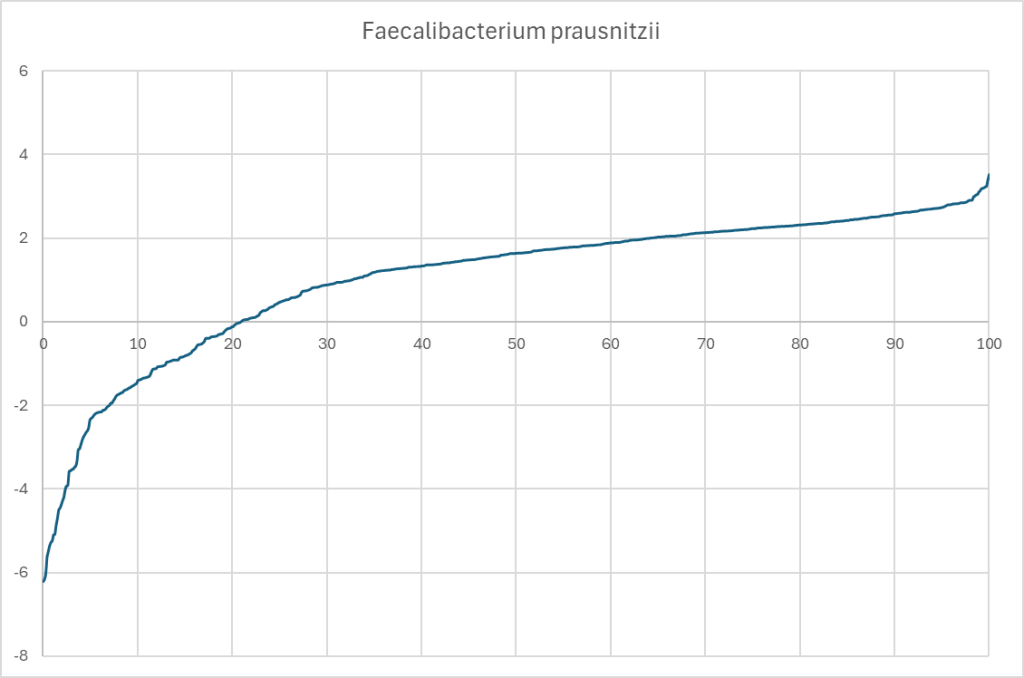
Ombre
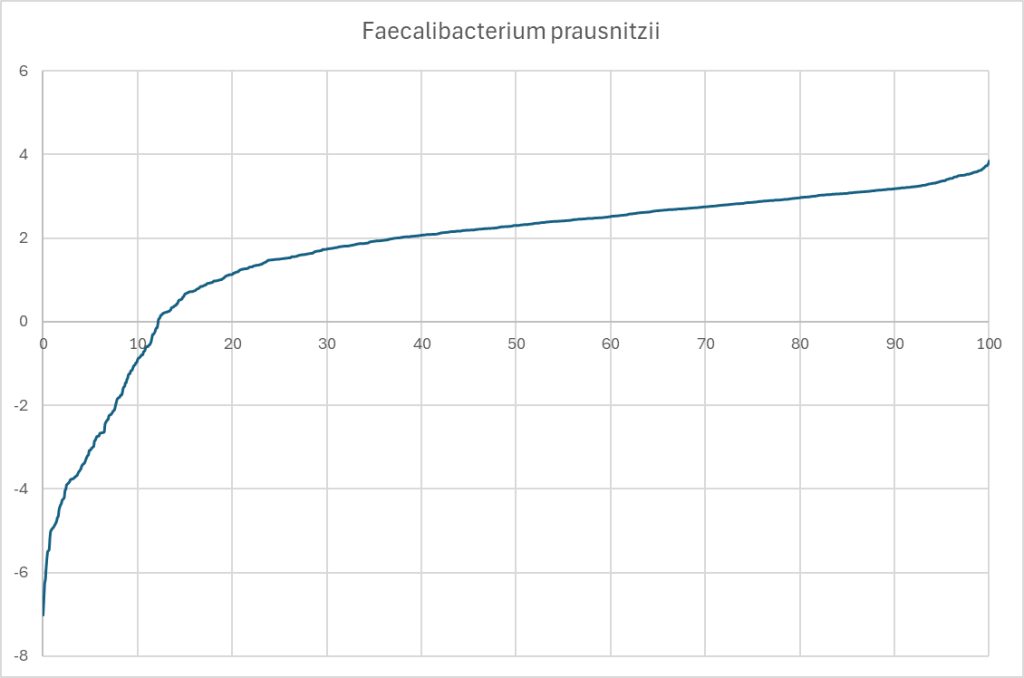
PrecisionBiome
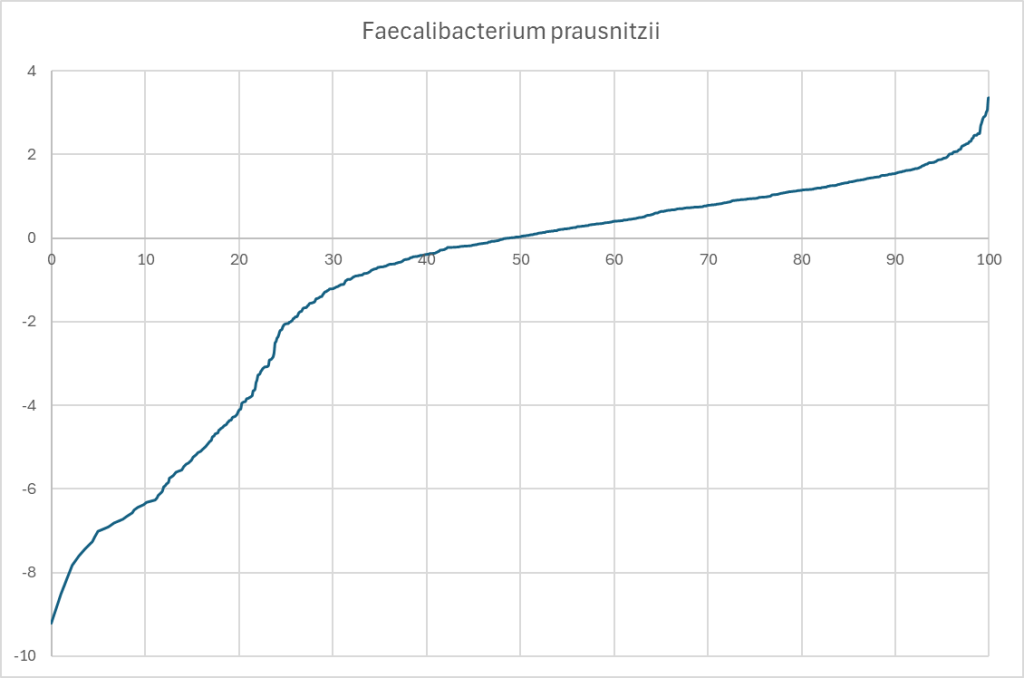
Vitract
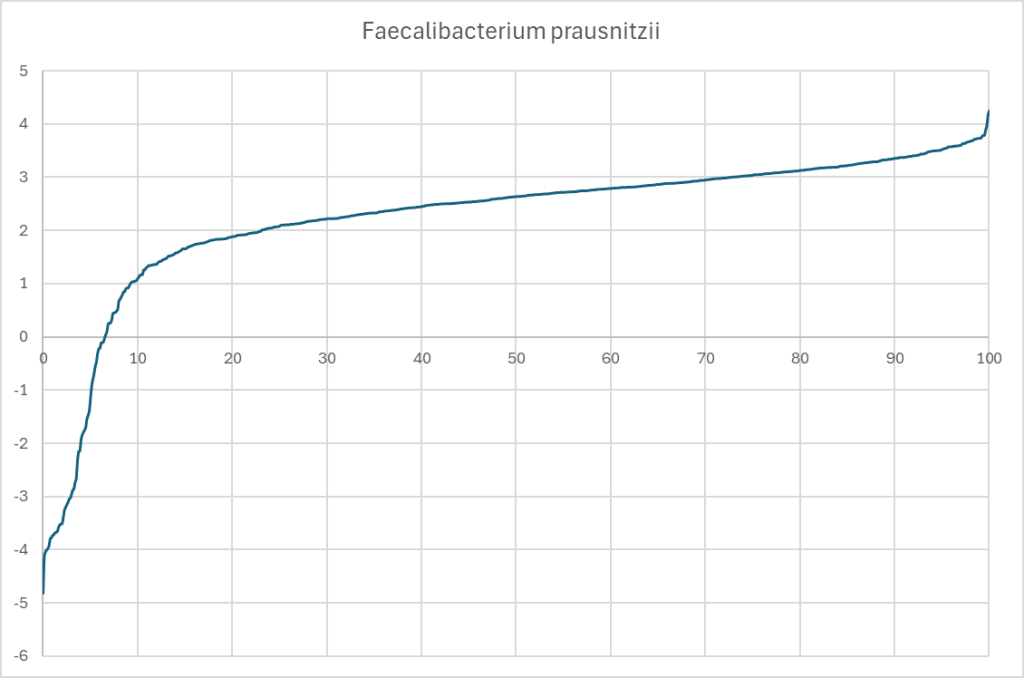
Thorne

Bottom Line
The first item of note: Two labs will typically (99% odds!!) report no Bifidobacterium Longum! In both cases, they do report it, but rarely detect any. Some medical practitioners (not knowing better about the test) will advocate this strongly as a probiotic with no safe evidence support that. This returns us to Scott’s quotation cited above, the blue whale!
While conceptually, the ability to transfer percentile ranges between labs is very appealing, it appears to be unsafe. Looking at the lower bounds for Faecalibacterium prausnitzii we see the following suggested (eye balling – make your own estimates):
- Biomesight: 18%ile
- uBiome: 30%ile
- Ombre: 12%ile
- PrecisionBiome: 30%ile
- Vitract: 12%ile
- Thorne: 20%ile
To me, this settles the issues. The KM percentile estimates for ranges cannot be transfered across labs. They are lab specific (and unlike the naive mean and standard deviation approach that ignores the high skews) require significant sample size.
Recent Comments